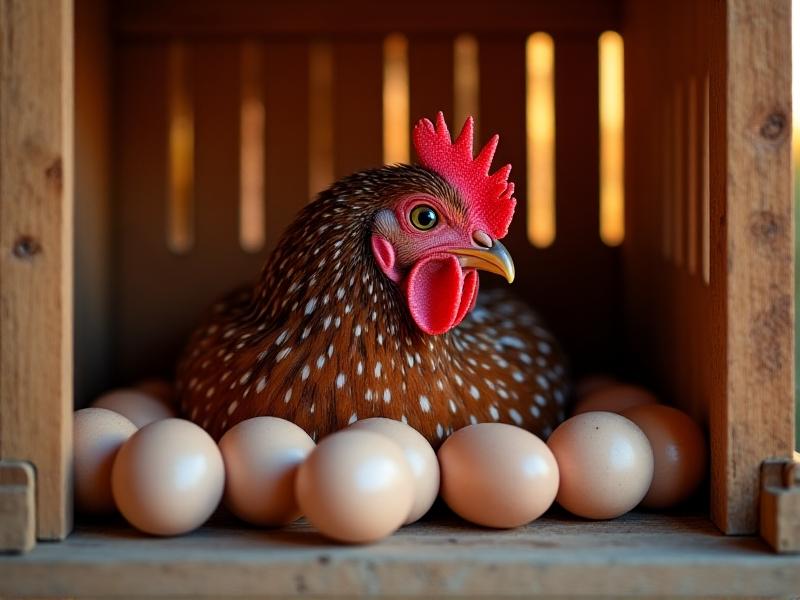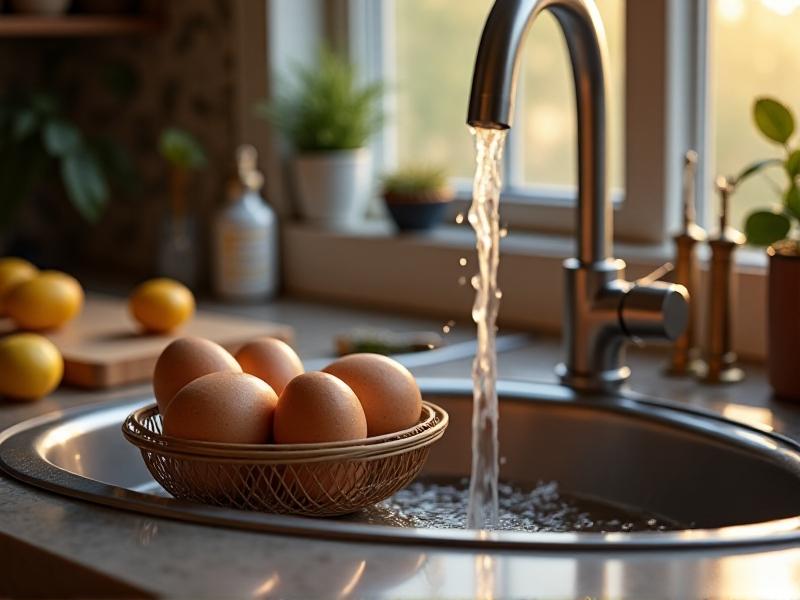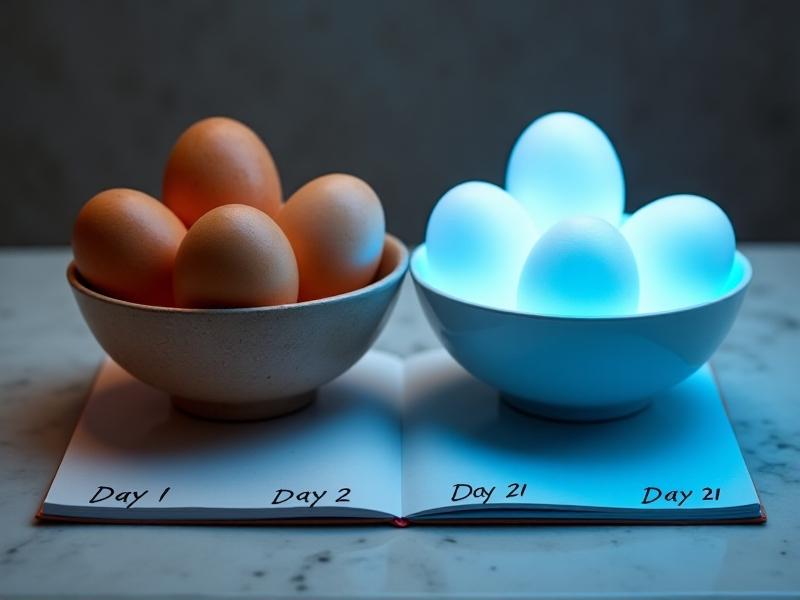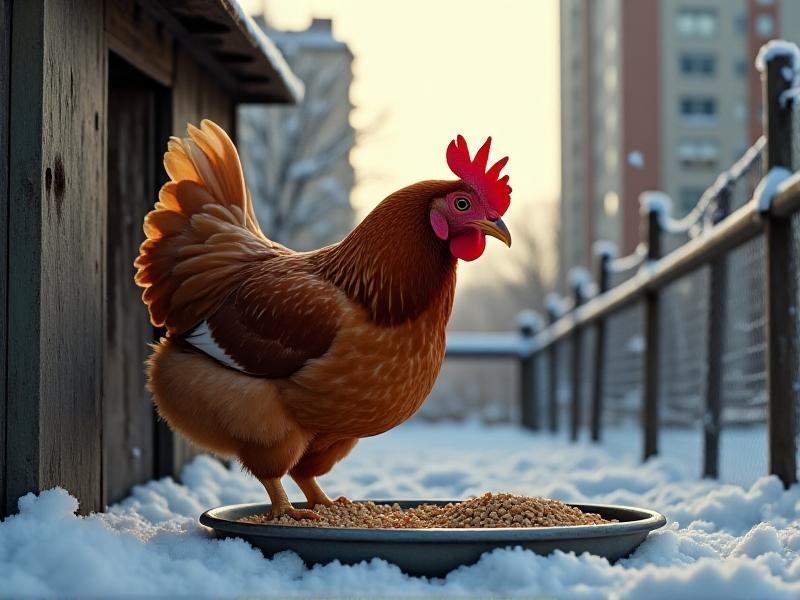Egg Washing vs. Natural Bloom: Best Practices for Urban Keepers
The Science Behind Egg Preservation

Egg preservation begins the moment an egg is laid. A thin, invisible layer called the cuticle, or "bloom," coats the shell. This protein-based shield acts as a barrier against bacteria and moisture loss. The bloom seals the shell’s thousands of microscopic pores, preventing pathogens from entering while maintaining internal humidity. In nature, this allows hens to leave eggs unattended during incubation without spoilage. For urban keepers, understanding this natural defense is key to deciding whether to wash eggs or preserve their bloom.
Research shows the bloom’s effectiveness diminishes if eggs are washed, refrigerated prematurely, or handled roughly. A 2018 Penn State study found unwashed eggs stored at room temperature resisted bacterial penetration 40% longer than washed ones. However, urban environments—with higher dust, humidity, or coop traffic—can compromise the bloom. Balancing hygiene and natural preservation becomes a daily consideration for city-based flocks.
Understanding the Natural Bloom: Nature’s Protective Layer

The natural bloom is a marvel of biological engineering. Composed of glycoproteins and antimicrobial peptides, it hardens within minutes of laying. This “liquid glass” adapts to environmental challenges: in dry climates, it reduces moisture loss; in damp settings, it repels mold. Urban keepers often notice bloom variations—thicker coatings in well-fed hens or weaker layers in stressed birds. Diet plays a role, too; omega-3-rich feeds can enhance bloom elasticity.
Yet city living tests this system. Pollution particles can embed in the bloom, and frequent human handling (common in small coops) wears it down. Some keepers use soft-bristle brushes to remove debris without stripping the coating. Others adopt a “dry cleaning” approach, gently rolling eggs in food-grade diatomaceous earth. The goal is to maintain the bloom’s integrity while addressing urban grime.
Egg Washing: When and Why It’s Done

Washing eggs becomes necessary when the bloom is visibly soiled—say, from muddy coop floors or droppings. The USDA mandates commercial eggs be washed at 110–120°F (warmer than the egg’s interior) using pH-balanced detergents. This prevents thermal cracking and bacterial suction into pores. Urban homesteaders often replicate this with warm water baths and unscented soaps, though debates persist about homemade methods.
Key risks emerge when washing is done improperly. Cold water causes the egg to contract, pulling contaminants inward. Harsh scrubbing erodes the shell’s calcium carbonate structure. A 2021 study in Poultry Science found that hand-washed eggs had double the Salmonella risk compared to unwashed when stored at room temperature. Thus, if washed, eggs must be refrigerated immediately and consumed within two weeks.
Comparing Freshness and Safety: Washed vs. Unwashed Eggs

Unwashed eggs can last up to three weeks at room temperature (50–70°F) versus four days for washed eggs left out. Refrigerated, both types last longer, but bloom-protected eggs maintain yolk integrity. When cracked, unwashed eggs often have thicker albumen and more prominent chalazae (egg white anchors). Washed eggs may develop a “flat” yolk over time due to gas exchange through open pores.
Safety comparisons are nuanced. The bloom resists Salmonella but not all strains of E. coli. A 2020 UC Davis analysis found that in urban coops with rodent exposure, washed eggs had lower surface bacteria—but higher internal contamination if washed incorrectly. The takeaway: if your coop is clean and eggs are collected promptly, natural bloom suffices. In high-risk environments, careful washing reduces hazards.
Best Practices for Urban Chicken Keepers
Preventative coop management reduces the need for washing. Elevate nesting boxes to keep eggs clean, and line them with aromatic herbs like mint (a natural pest deterrent). Collect eggs 2–3 times daily—morning lays are most vulnerable to midday heat. Use sanding blocks to gently buff off minor dirt; their 220-grit texture polishes without abrasion.
If washing, invest in a countertop sanitizer with UV-C light, which kills 99.9% of bacteria without water. For DIY methods, mix 1 tbsp white vinegar per gallon of 115°F water. Never soak eggs; limit washing to 3 minutes. Dry immediately with paper towels, and refrigerate in sealed containers. Label shells with lay dates using pencil (ink seeps through pores).
Troubleshooting Common Egg Storage Issues
Sticky or slimy shells signal bacterial growth. Discard these eggs. For mildly dirty eggs, rub with dry steel wool (food-grade) to preserve the bloom while removing debris. If eggs develop a sulfur smell, check storage humidity; aim for 70–80% to prevent gas escape. Use a hygrometer in your fridge—overly dry conditions accelerate quality loss.
Cracked eggs, common in urban coops with space constraints, require immediate action. Bake them at 150°F for 30 minutes to solidify the contents, then refrigerate. This “thermal stabilization” extends usability by 5 days. Never freeze eggs in-shell; the expansion fractures internal membranes.
The Future of Urban Egg Care: Innovations and Trends
Emerging technologies aim to bridge the wash vs. bloom debate. Edible coatings—like chitosan from crab shells or beeswax emulsion—are being tested to replace lost bloom post-washing. A 2023 Tokyo trial showed chitosan-coated eggs stayed fresh for 6 weeks unrefrigerated. Meanwhile, UV-LED “bloom boosters” in coops promise to reinforce the natural cuticle using timed light exposure.
Urban keepers are also adopting blockchain for traceability. Scanning an egg’s QR code reveals its wash history, diet, and storage conditions—vital for farmers' markets. As cities revise poultry ordinances, these innovations empower keepers to merge tradition with cutting-edge science.








